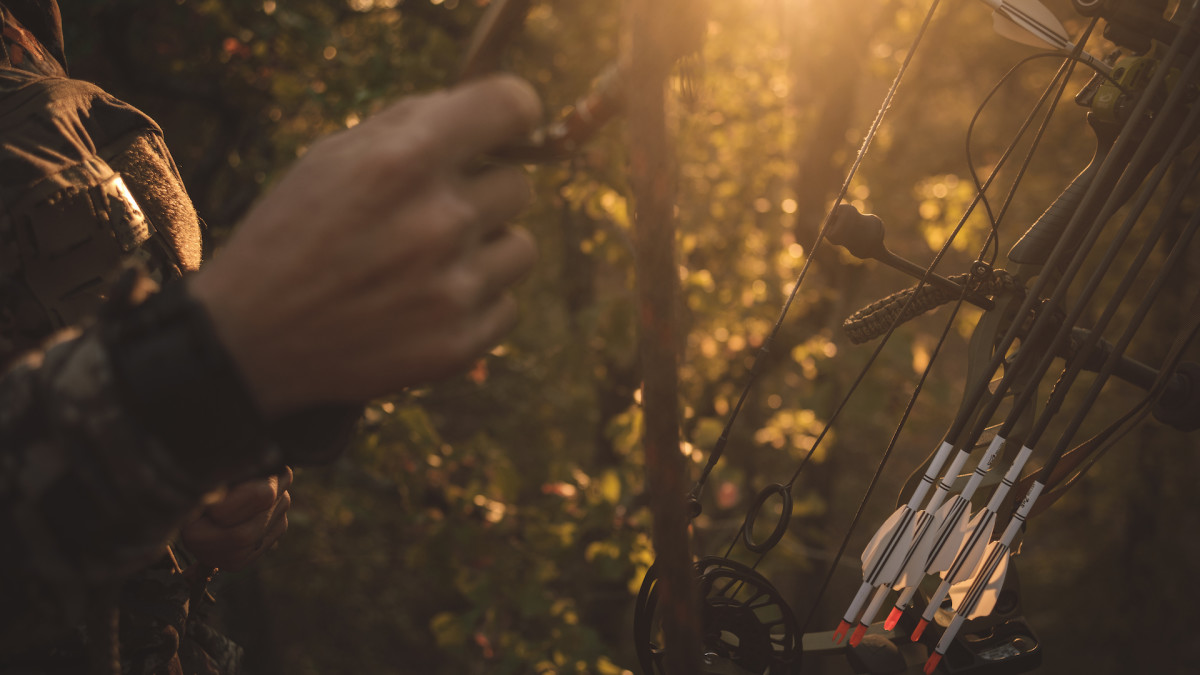
Many bowhunters these days are turning their attention to heavy-hitting arrows, desiring an arrow that will pass through anything in its path. Of course, this comes at the expense of a slow-moving arrow and an unforgiving trajectory. If instead, you seek an optimal middle ground, you likely find yourself walking a fine line between speed, accuracy, forgiveness, and penetration. Let’s take a look at what it takes to penetrate a deer’s shoulder.
The Anatomy of a Shoulder Shot
While diving into the subject, it’s important to know that not all shoulder shots are created equal. If a broadhead impacts the shoulder knuckle, where the scapula adjoins the humerus, this bone is very dense and will likely stop even the best penetrating setups.
The same can be said about the “T” of the scapula, which I’m referring to as the thin but rigid bone that protrudes perpendicularly to the flat side of the scapula. A direct impact to the “T” can also greatly hinder penetration.
Another possibility is a high scapula hit, in which the broadhead penetrates the top of the scapula, but then is lodged into the vertebrae. Without an informal autopsy, it’s likely you’ll blame the scapula for completely stopping your penetration. With anatomy in mind, to determine whether or not your arrow setup has the authority to penetrate the scapula, let's take a look at aspects that will increase and decrease penetrating ability.
Factors That Decrease Penetration
In a nutshell, anything that creates drag is going to decrease penetration and greatly reduce your chances of passing through the shoulder. Every hunter has an anecdotal theory about what will pass through a whitetail’s shoulder, but most hunters’ sample size is very small. For a much larger sample size, us average everyday bowhunters should turn to advise from people with extensive hands-on experience, like the renowned Chuck Adams.
If you place all your shots through the ribcage, it’s likely any relatively sharp broadhead will get the job done. However, if your broadhead does come into contact with bone, broadhead design is paramount.
“An often-overlooked factor in penetration is the strength of the head you use,” Adams said. “For example, a Striker or Montec will drive through flesh and bone without bending or breaking, while other broadhead designs with weak aluminum ferrules or thin blades can crumple or shatter on impact. This will severely weaken penetration and tissue damage, and might lose an animal.”
In Adams's experience, broadhead design, width when open, and angle of blade edges all factor into performance. But broadhead choice isn’t the only variable at play here.
“Poorly flying, badly tuned arrows that wobble through the air can ruin deep penetration,” Adams said. “Drag against flesh and bone is high, and blades that open on impact or arrows that wobble can also flip the arrow sideways with angling hits. This is called ‘cartwheeling.’ Even hunters using heavy-draw bows don’t always get arrow pass-throughs on perfectly broadside deer if arrows flip or create high friction.”
Shoulder Friendly Setups
Because there are so many factors at play, it’s hard to say with 100% certainty which arrow setups will penetrate a deer's shoulder every time. However, let's call out a few examples of modern-day arrow setups that are very likely to penetrate the scapula.
Take the average male bowhunter shooting a roughly 70-pound bow, with about a 28-inch draw length. For those unfamiliar with the effect of draw length on penetration, the longer your draw length, the more energy that gets imparted into your arrow, increasing the likelihood of a pass-through. In a perfectly tuned bow, a moderately weighted arrow (around 450 grains), paired with a quality fixed blade broadhead with a cut-on-contact point is going to pass through the scapula at close ranges. Something like an Iron Will, Day Six, G5 Montec, or similar broadhead with retained sharpness, a sharp or needle-like point, generous blade angle, and steel construction is going to fair well.
Take that same bow and arrow, but put a three-blade expandable with a 1.75- or 2-inch cutting diameter, and penetrating the shoulder muscle and scapula is not likely. If you prefer a mechanical broadhead for it’s forgiving flight characteristics, but still want a chance at passing through the scapula, you’d be wise to stick with a semi-heavy arrow, a two-blade design, a cut-on-contact tip, and a smaller 1.5-inch cutting diameter. My personal favorite design to fit the bill is the 1.5-inch Sevr, with blades that pivot if you happen to strike the edge of a bone.
The Verdict
Armed with the knowledge of a setup that will penetrate a deer’s shoulder, it’s up to you to decide your perfect arrow setup. A tough question to answer is, do you really need to penetrate a deer’s scapula?
When you think about it, the scapula (and any other dense bone for that matter) makes up a fairly small percentage of a deer’s anatomy. Do you want an arrow that can punch through heavy bone or would you rather have a more forgiving setup, with a larger cutting diameter and flatter trajectory, for the more likely scenario in which you hit a deer further back in the thoracic cavity?
Some factors to consider are, how far do you typically shoot? Do you usually have time to range animals? Truthfully, how good of a shot are you in the heat of the moment? Do you want the ability to take quartering shots, flirting with an entry point near the scapula? All things considered, it is up to you to choose the arrow setup that best suits your hunting style, environment, and capabilities.





Conversation